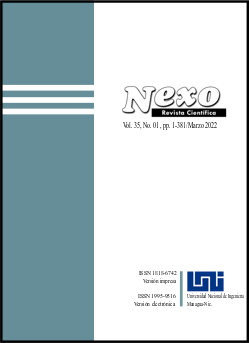Scientific analysis of organization intellectual capital using categorical grid method
DOI:
https://doi.org/10.5377/nexo.v35i01.13947Keywords:
Intellectual Capital, Scientific Approach, Triadic Network, Categorical Grid, Relational CapitalAbstract
The article proposes the author's scientific approach using the categorical grid method to determine the essence and composition of an organization's intellectual capital elements. They determined the list of elements describing the problem field of research. A categorical network has been formed that determines the scenarios for interacting intellectual capital elements. Possible connections between the tops of the triadic grid of intellectual capital phenomenon are revealed, which makes it possible to clarify the elemental composition of intellectual capital, to correlate the concepts of "consumer capital", "client capital", and "relational capital". The performed interpretation of the developed model of the triadic grid makes it possible to comprehend and describe the behavior of intellectual capital and possible scenarios for its development.
Downloads
1297
Downloads
Published
How to Cite
Issue
Section
License
Copyright (c) 2022 Universidad Nacional de Ingeniería

This work is licensed under a Creative Commons Attribution 4.0 International License.
The authors who publish in Nexo Scientific Journal agree to the following terms:
- Authors retain the copyright and grant the journal the right of the first publication under the license Creative Commons Attribution License, which allows others to share the work with a recognition of the authorship of the work and the initial publication in Nexo Scientific Journal.
- Authors may separately establish additional agreements for the non-exclusive distribution of the version of the work published in the journal (for example, in an institutional repository or a book), with the recognition of the initial publication in Nexo Scientific Journal.
- Authors are allowed and encouraged to disseminate their works electronically (for example, in institutional repositories or in their own website) before and during the submission process, as it can lead to productive exchanges, as well as earlier and greater citation of published works.










